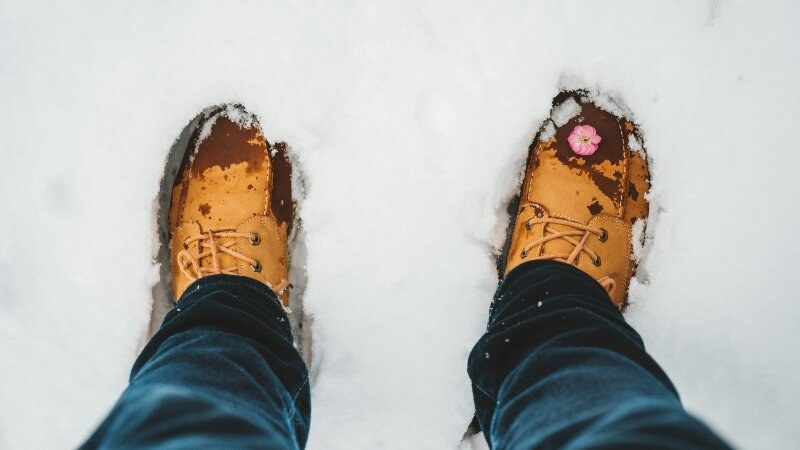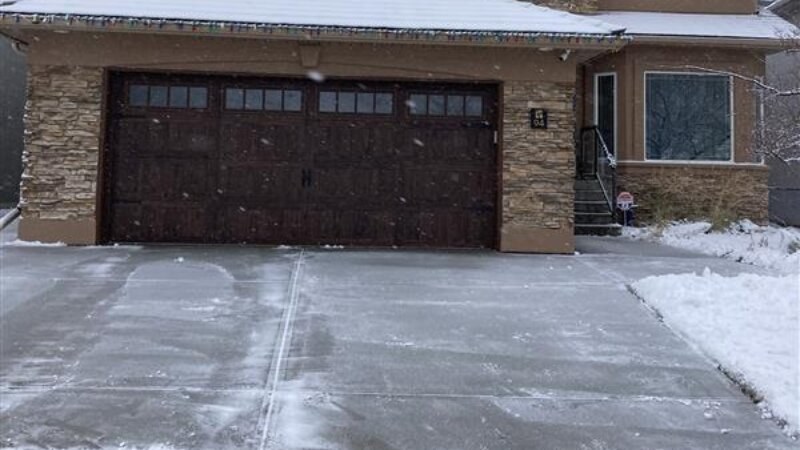Safety Guide: How to Prevent Slips and Falls in Winter
Reading time: 6 minutesAs Canadians (especially if you’re in Alberta, Saskatchewan, or Manitoba), we’re no strangers to brutal winters. -30°C with snow showers accompanied by strong, gusty winds? No problem. Unless you just moved here, in which case you’ll get acclimated soon enough. But no matter how used to snow and ice you are, there’s always the potential for dangerous slips and falls.
Here’s what to know about common winter safety hazards, how to avoid slipping and falling, and what to do if you or someone else falls. Plus, get tips on reliable, professional snow removal services you can trust to get the job done right.

Winter Safety Hazards in Western Canada
While magical in appearance, accumulating snow creates dangers almost everywhere outside – and even inside if you’re not careful. These are the most critical areas to be aware of and why:
- Public sidewalks. These are easy to slip on if not cleared. Depending on the bylaws, either the City or property owners themselves are required to remove snow from any sidewalks that are adjacent to their homes or businesses.
- Parking lots. Snow and ice can easily mix with oil and dirt on a parking lot floor, creating extremely slippery and dangerous circumstances.
- Stairs. Ice can glaze over a set of stairs in a way that’s hard to see, and people may not know there’s a risk until they’re already halfway up or down the steps.
- Accessibility ramps. Even just a few centimetres of snow accumulation can make it hazardous or impossible for disabled patrons to use them without injury or damage to their mobility aids.
- Sloped ground. While usually not a problem, sloped ground presents new challenges when covered in snow, slush, or ice. It’s much easier to lose your footing when walking up or down sloped areas that are slick and without good traction.
- Driveways. Since delivery services often use driveways and must be accessible to first responders in case of an emergency, these are usually required to be cleared, even if the property is a private home.
- Public transportation areas. The City generally cleared bus stops, bike lanes, and other spaces intended for community transportation. These are the highest priority areas to be cleared before residential roads and commercial parking lots.
Winter Walking Tips
If you plan to be walking across snowy pathways, icy streets, and other areas that may be hazardous, here are some helpful tips to keep in mind:
Before You Start Walking
Before you start walking, the University of Calgary suggests that you:
- Allow for plenty of extra travel time. If you’re in a hurry trying to get to where you’re going, you’re more likely to slip than if you’re going slow and taking each step carefully.
- Make sure your shoes are in good condition with enough traction. Don’t go out in the winter with old, worn-out shoes or high heels. Instead, consider getting a new pair of quality, waterproof boots before the season starts.

While You’re Walking
As you’re heading to your destination, U of C says to make sure you do the following:
- Walk only in designated walking paths. Pedestrian walkways are often salted before storms and are usually among the first public spaces to be cleared of snow.
- Walk slowly with small, shuffling steps. Waddling a little bit like a penguin with your feet pointed out can help you keep from slipping and make it easier for you to catch your balance if you do.
- Test areas before you step on them. If an area looks like it doesn’t have any ice or snow on it, but everywhere else does, test it with your foot before walking. It’s likely “black ice,” which is a thin sheet of complete ice cover that’s difficult to detect.
- Use handrails where you can. However, you should avoid them if they’re icy since this could increase the risk of losing your balance.
- Keep your eyes “on the road.” You may not be driving, but walking across snow and ice requires just as much vigilance to stay safe. Watch where you’re going, and don’t hesitate to stop and look around to reassess your surroundings. Never walk and use your mobile phone at the same time.
- Hold your arms out. If you feel unbalanced, hold your hands and arms out like a tightrope walker to help you better control your steps.
The University of British Columbia suggests wearing a backpack on your trip because this can change your centre of gravity and make it easier to maintain balance on slick roads or walkways. Plus, a backpack can hold items and free your arms up to break a fall in case you slip.
When You’re Done Walking
Fall Prevention Month also has some great suggestions for things you can do after walking to reduce the chances of slipping and falling in your home. The organization recommends removing wet footwear at the door or wiping the soles of shoes on an entryway rug to dry them.
You should also drink lots of water and get plenty of rest since walking in winter is much harder on the body than walking in comfortable or warm temperatures.
What to Do If You Fall
If you or someone else has slipped and fallen on ice, there are some basic safety steps you should take for minor injuries:
- Check if the person can move away from the area to somewhere warm. If possible, get out of the cold to reduce the risk of hypothermia or frostbite.
- Immobilize and elevate the injured body part. Swelling is common after a slip and fall injury. If the injury is minor, you can wrap and elevate the area to help with pain relief.
- Get the person to a doctor or urgent care. While minor injuries like bruising don’t necessarily need emergency treatment, sprains must be examined.
If you suspect the injury may be serious or occurred to the head, neck, or spine, the protocol you should follow is different:
- Don’t move the injured person. This could potentially make any spinal cord damage that has occurred worse. If you are the person who is injured, try to lie in the same position without moving until help arrives.
- Call an ambulance. It’s crucial to get the person who is hurt to a hospital right away. Paramedics can get to the scene and stabilize the person so they can be safely transported.
- Help keep the person warm. If it’s not possible to move out of the cold, lay a blanket or extra coat over yourself or the injured person until the ambulance arrives.
According to the Canadian Red Cross, injuries that require immediate medical attention usually present with extreme pain, deformities of the limb, broken bones sticking out of the skin, the sound of popping or snapping during the fall, sudden limited use of the affected limb, and unconsciousness for any length of time.
The Importance of Proper Snow Removal in Winter Slip and Fall Prevention
Most Canadian provinces have strict regulations about accumulated snow and its disposal. For example, snow removal in Calgary must be done within 24 hours after snowfall stops. Failure to do so could result in a hefty fine of up to $750 for the property occupant (if there is one) and a separate fine of $150 plus administration fees for the property owner.
Home and business owners often rely on professional snow removal services to meet these guidelines without investing in expensive equipment or interrupting their busy lives. Qualified snow clearing service providers know how to collect and dispose of snow properly according to each municipality’s regulations, so you are never fined for improper removal, and your home’s exterior always looks great.

Gotta Get Rid of Snow? Call Green Drop!
Got snow? No problem. Green Drop specializes in safe and thorough snow removal in Calgary, Edmonton, Red Deer, Regina, and Saskatoon.
Our team of snow-clearing specialists can quickly and safely remove snow from your property to reduce the risk of slips and falls and keep your home exterior looking sharp.
Let it snow

